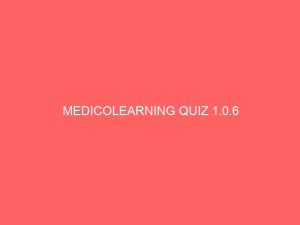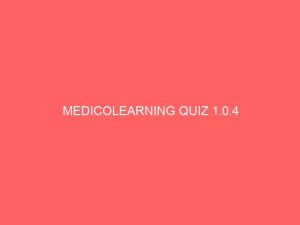Results

#1. What is the diagnosis?
The mucocutaneous pigmentation is most consistent with Peutz-Jeghers syndrome.

#2. Treatment with what antibiotic is most likely to have resulted in this patient's skin changes?
Minocycline was the cause of this patient’s hyperpigmentation.

#3. What accounts for this patient's hand pain?
Peripheral ischemia resulted from interruption of radial artery blood flow at the wrist by a thrombosis.

#4. What is the diagnosis?
This computed tomogram of the chest revealed multiple pericardial masses with central necrosis consistent with metastatic disease.

#5. These lesions were neither pruritic nor painful. What is the diagnosis?
This patient was diagnosed with necrobiosis lipoidica diabeticorum.

#6. An elderly woman presented with abdominal pain and vomiting for three days. A computed tomogram of the abdomen was obtained. What is the diagnosis?
An obturator hernia was diagnosed.

#7. This patient presented with discoloration of his palms and soles. He reported a normal diet and had normal serum creatinine, thyroxine, and bilirubin concentrations. What is the diagnosis?
Yellow discoloration of the skin may be associated with carotenemia, hypothyroidism, diabetes mellitus, liver disease, and renal disease.

#8. This patient presented with severe jaw pain while being treated for osteoporosis. What is the diagnosis?
A diagnosis of bisphosphonate-associated osteonecrosis of the jaw was made in this case.

#9. What is the diagnosis?
This symmetric, dusky red, and polymorphic papulosquamous rash is consistent with secondary syphilis.

#10. This 19-year-old man presented with a 10-month history of Raynaud's phenomenon, fever, abdominal pain, and hypertension. What diagnosis is suggested by the findings on his angiogram?
The angiogram reveals multiple microaneurysms involving the renal artery. A biopsy of a subcutaneous nodule was consistent with polyarteritis nodosa.





